The Circle Elm and the Library Oak: Part Two

As a consequence of Dutch elm disease and the lack of diversity in its landscape plantings, the UNI campus today has only a few large trees. There is a nice double row of pin oaks, none planted earlier than the 1930s, between the Campanile and the West Gym. There is a large soft maple in the low area south of the President's House. There are also some large ash trees, probably planted in the late 1890s, in front of Seerley Hall. However, almost certainly no tree now standing on campus was here when the school opened in 1876.
One of the finest large trees remaining on campus is the oak in front of the Rod Library. This beautiful example of the swamp white oak (Quercus bicolor) has survived many years of foot traffic, construction, and other disturbance to become a campus landmark. It is difficult to say exactly when the library oak began its life on campus. The tree does not appear in photos from the 1890s or the early 1900s.
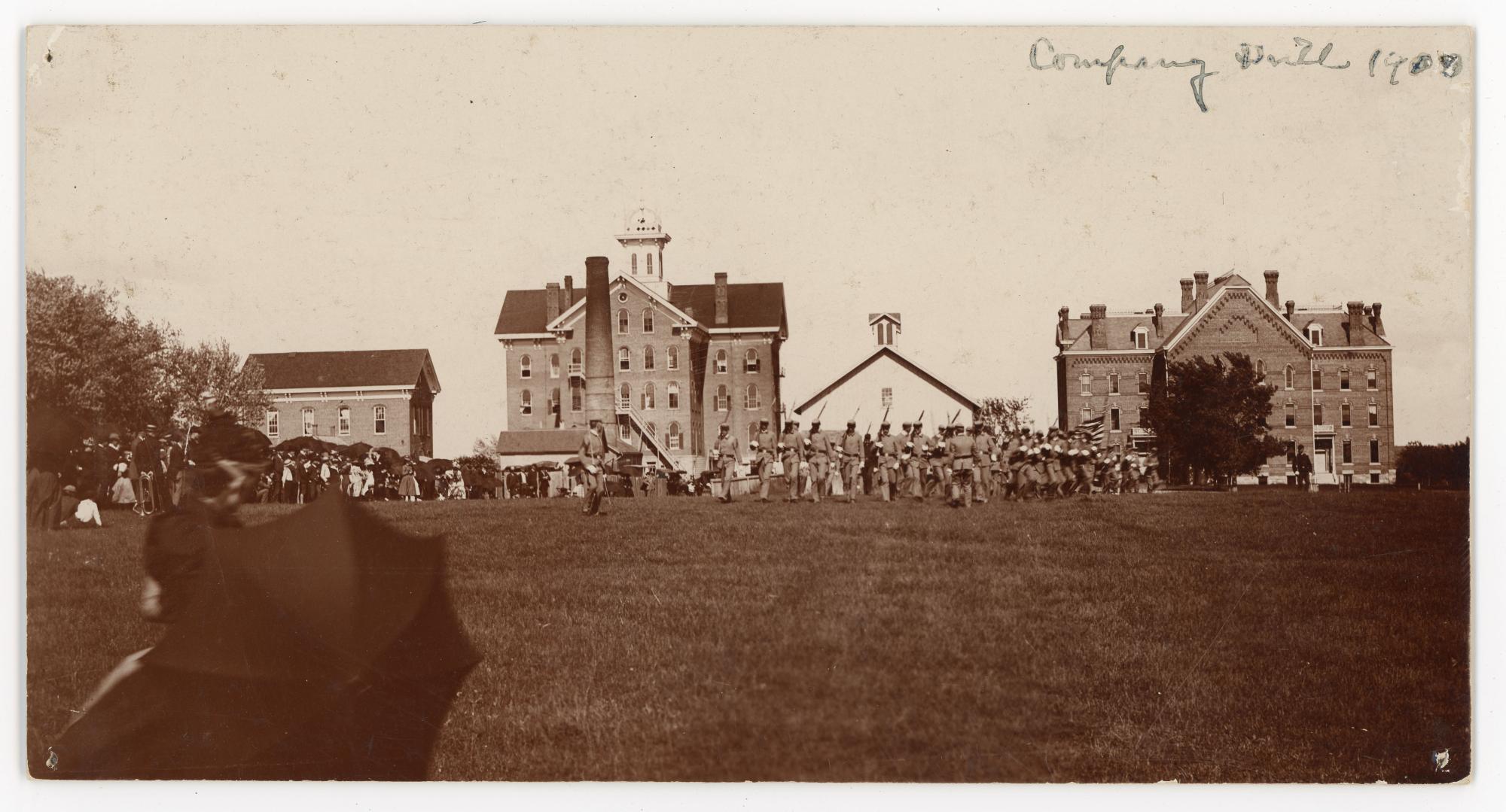
In those days the area where the tree and the library now stand was the school's "backyard" and playing field. Students participated in athletics and military drill in this area.
A gymnasium, completed in 1904 and now known as the Innovative Teaching and Technology Center, was the first building erected in this area.
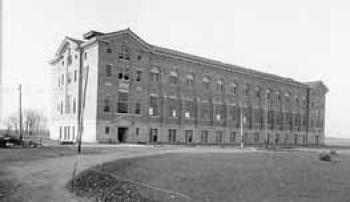
At that same time, a small "temporary" frame building for Domestic Science classes was built just south of the Gymnasium. It stood a little in front of where the northeast corner of the Library now stands. This temporary building probably provided the reason for the planting of what is now the library oak.
The Domestic Science building was built in the shape of the letter "C", with the arms of the "C" pointing west. These arms framed a little yard sheltered on three sides by the building. Not long after this building was completed, a small tree appears in photographs of this yard.

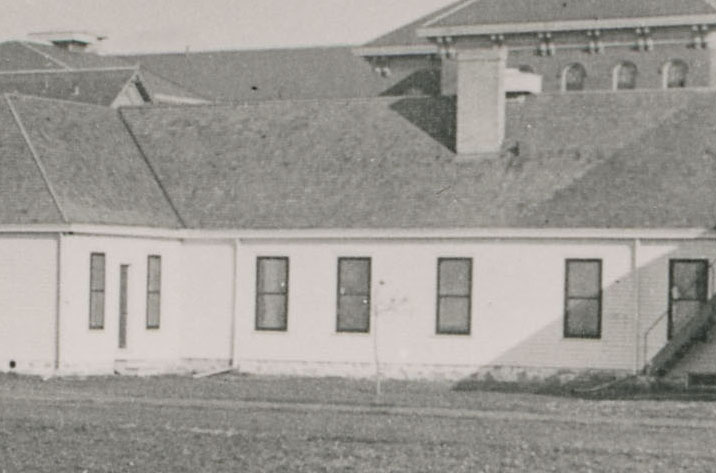
The precise date that the tree first appears cannot be determined because there are few photos of this part of campus during this time. However, it is reasonable to estimate that the first photo in which the tree appears was taken around 1910.
Given the disturbance caused by the construction of the Gymnasium and the Domestic Science building and the lack of oak trees in the vicinity, it is unlikely that the tree was a volunteer that happened to germinate in a fortunate location. Rather, it is likely that it was planted there intentionally, perhaps to provide shade from the setting sun and shelter from the west wind.
The oak prospered in this location. By the middle to late 1920s, the oak stood about fifteen feet tall and already gave a little shade to the Domestic Science building.

From the middle 1920s through the early 1940s, the Teaching Department ran a nursery school in this building. The best close-up images of the oak during these years occur in photos of the nursery school and its activities. The oak made excellent growth during this period. Early nursery school photos show a healthy, but still obviously young tree. Late photos show the oak beginning to assume the shape of a mature oak. During this time the diameter of the trunk also increased remarkably.

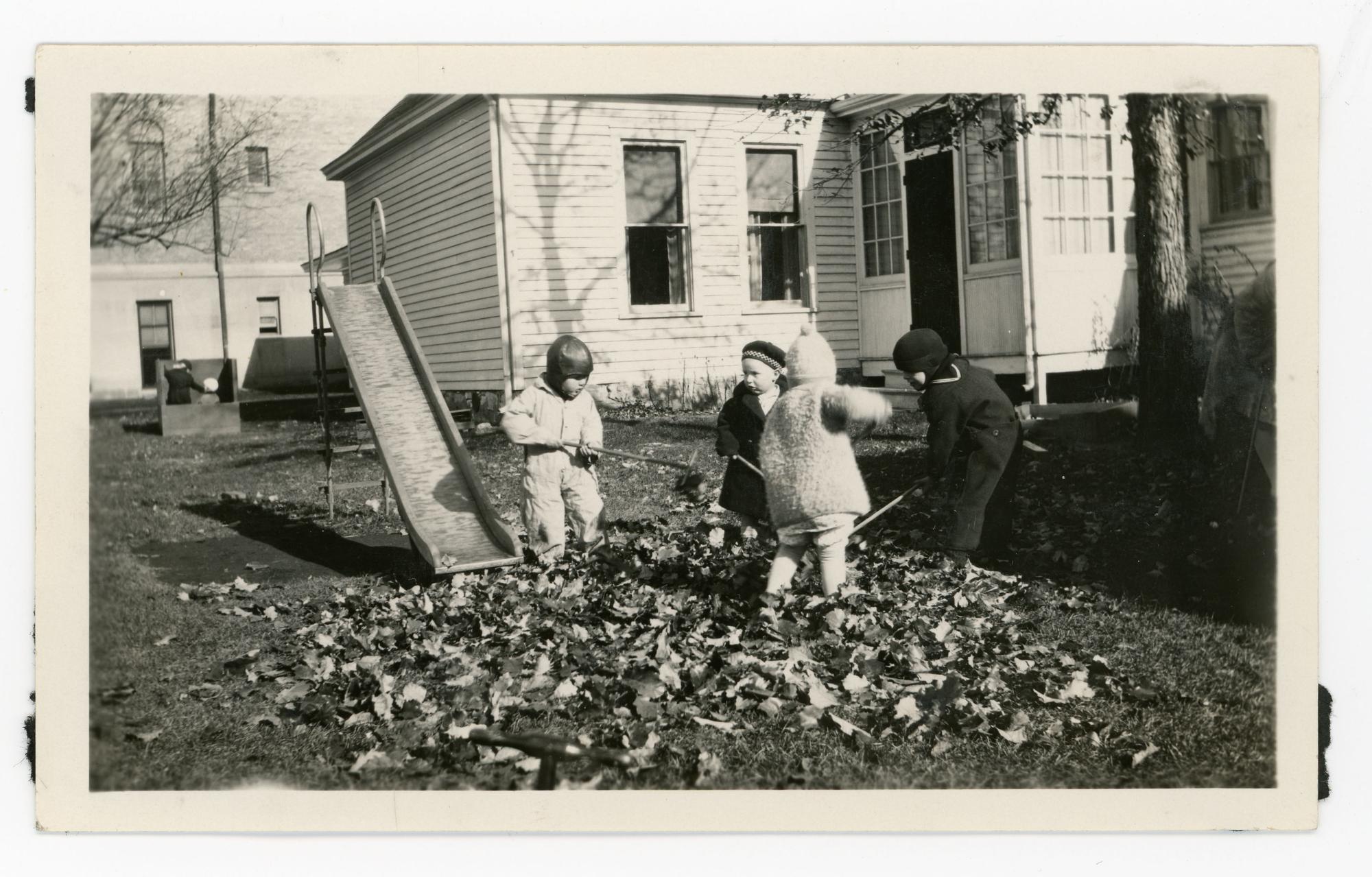



Airviews offer another perspective on the oak. A shot from about 1930 shows the dark leaves of the oak peaking over the roof of the white frame Domestic Science building near the top center of the photo. This photo also gives a good idea of the proximity of the Circle Elm to the old power plant.

An airview from the late 1930s shows the new power plant in operation on the left of the photo and the old power plant site cleaned up and landscaped.

An airview from the early or middle 1940s shows that the first phase of Lawther Hall has been completed and that O. R. Latham Stadium has a permanent grandstand. The oak shows a little wider spread.

A significant change occurred in the oak's neighborhood in May 1954. After fifty years, the "temporary" Domestic Science building was demolished.
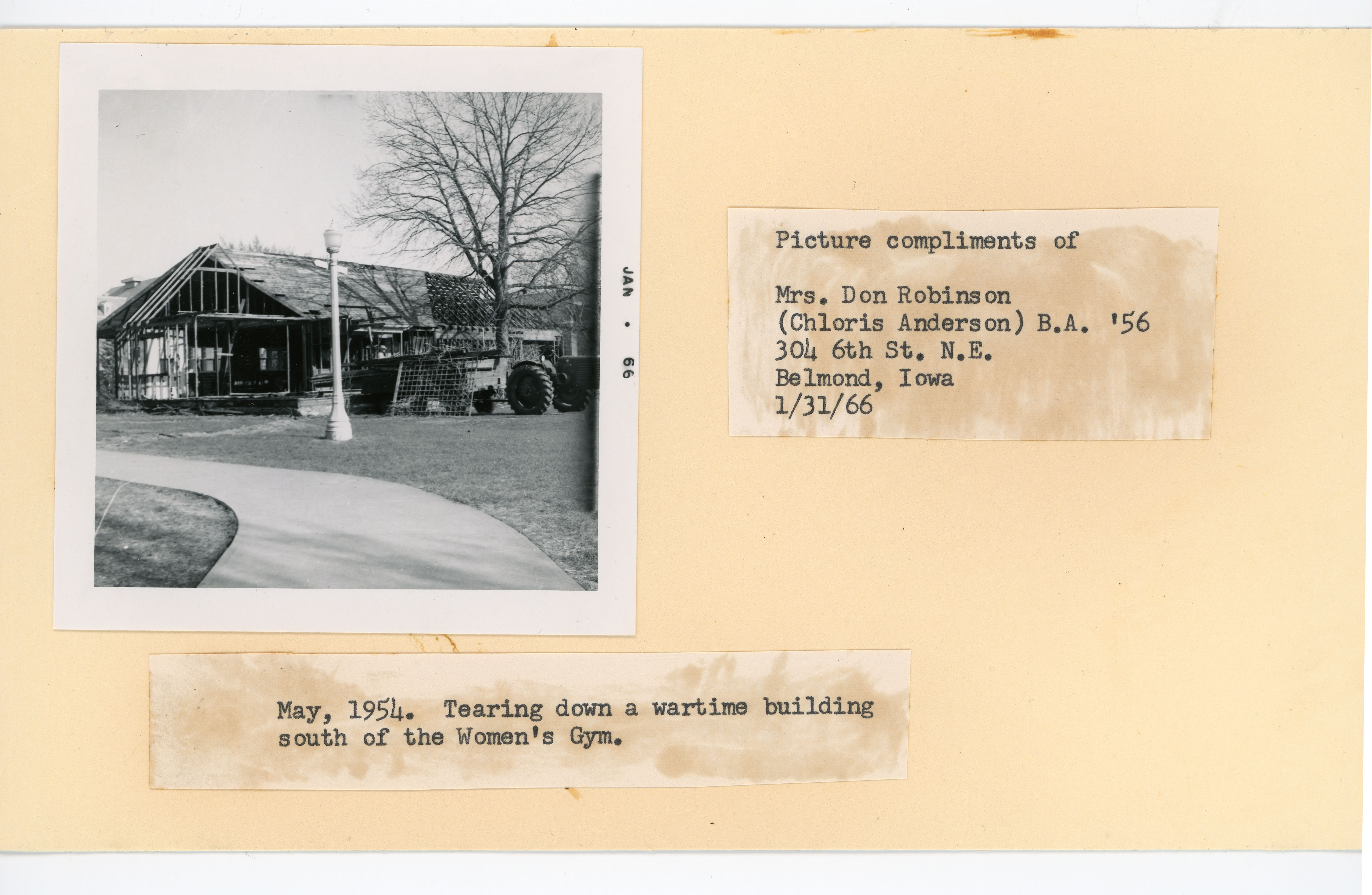
The oak became freestanding and visible from all sides for the first time. An airview from about 1960 shows the Circle Elm at left center and the oak standing relatively isolated to the left of the East Gym.

The oak did not stand isolated for long. In 1963, construction began on Phase One of the Rod Library. Excavation for the foundation and the east window wells extended very close to the oak's drip-line.

The construction company built its saw shed just a few feet away from the oak's trunk. Heavy equipment and concrete walks compacted soil and altered drainage near the oak.

The oak survived all this disturbance and quickly became a featured photographic subject. The oak's location near the northeast corner of the Library helped to frame and soften the lines of the new library building.
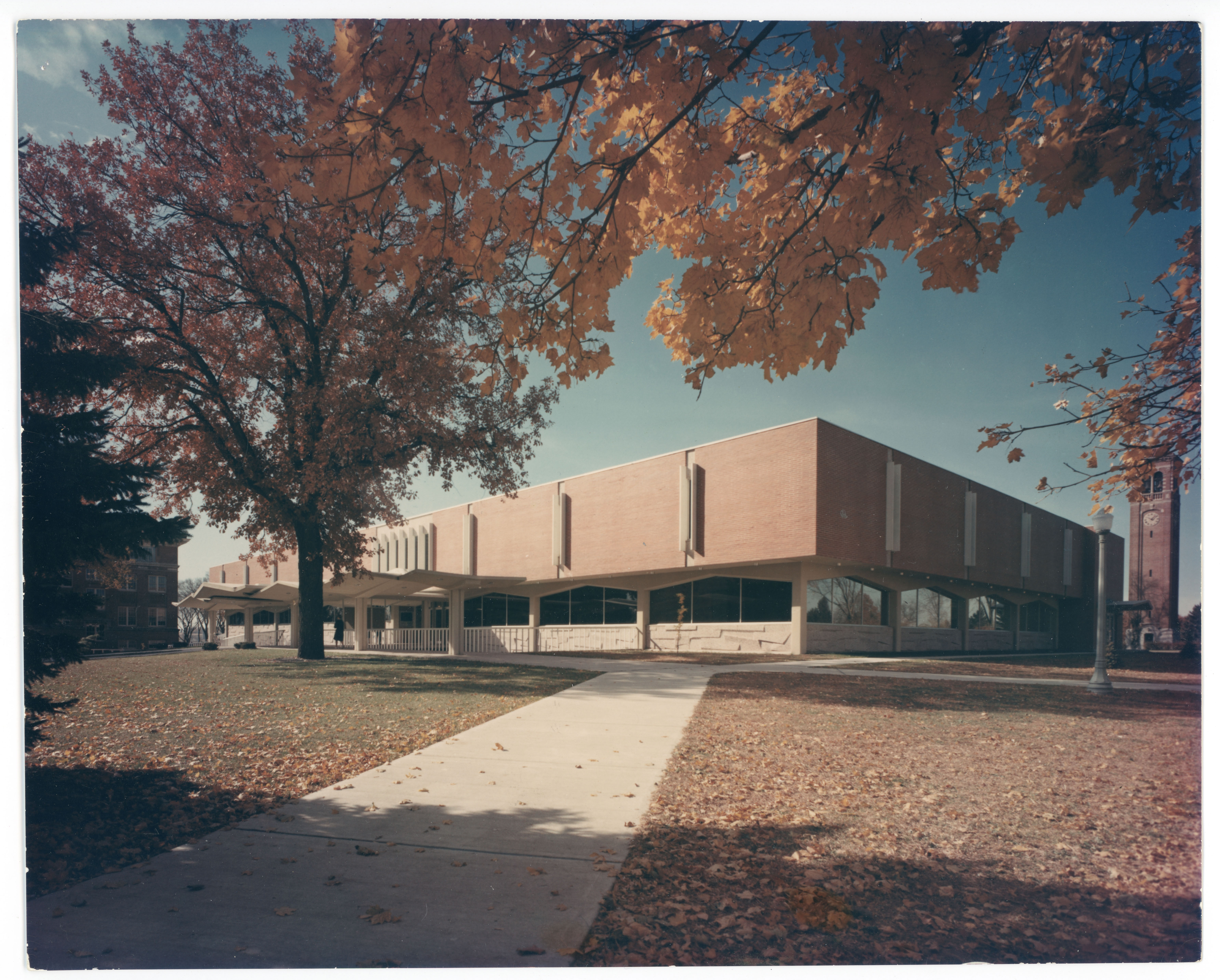
For the years between the completion of Phase One of the Library in 1964 and the beginning of the construction of Maucker Union in 1967, the oak was on the edge of the pleasant central campus park known as the Back Circle.

With the completion of the Union in 1969, the immediate surroundings of the Library Oak took on their current appearance. Most of the area between the Union and the Library was paved. Green space was severely limited. The oak was confined to a small grassy area of a little over 1000 square feet.
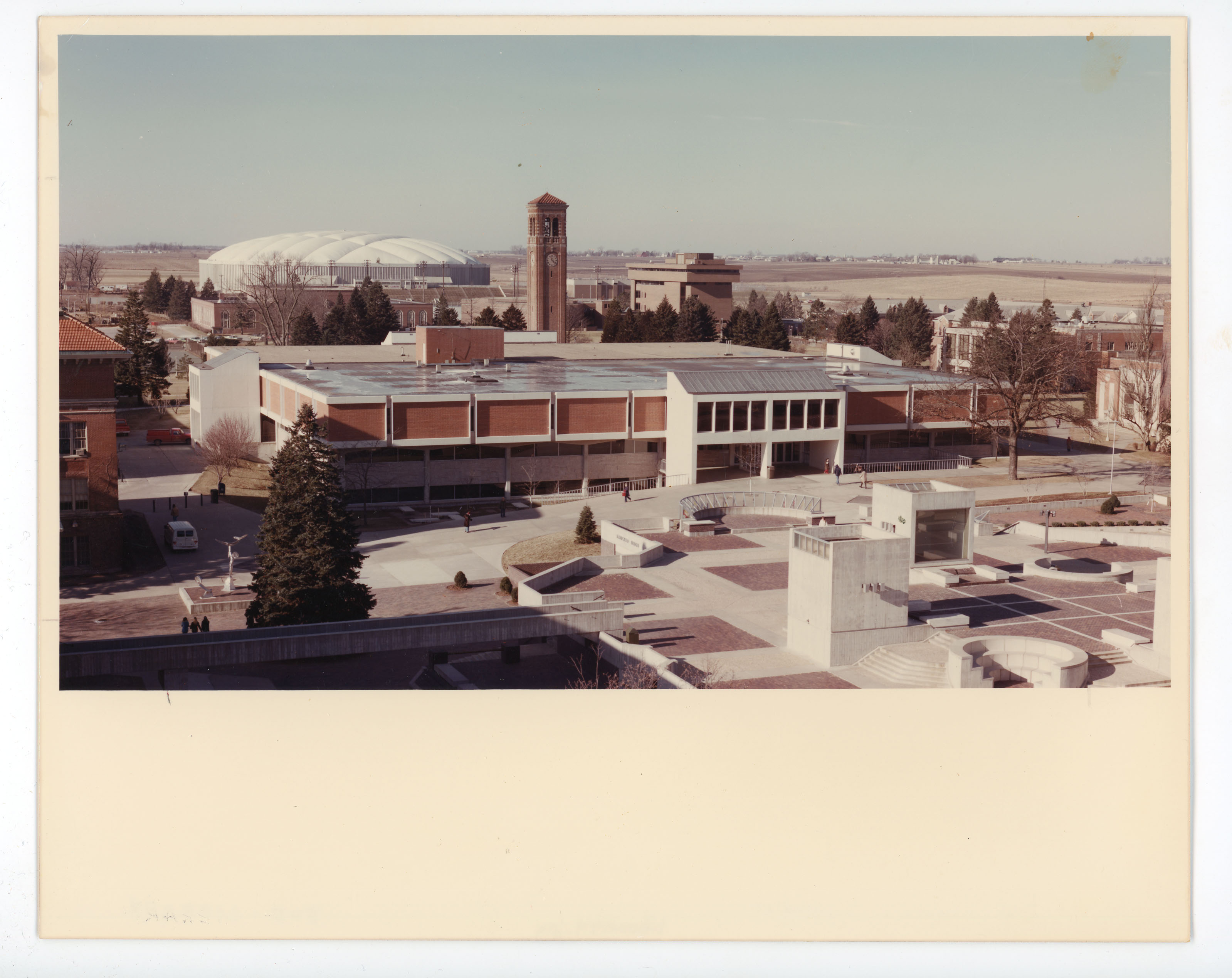
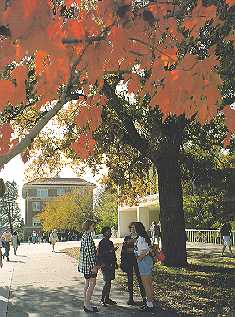
The Library Oak has lived under difficult conditions for the last forty years. The surrounding concrete sidewalk and plaza reflect heat and limit the amount of water that can reach the oak's roots. Replacement of most of the surrounding concrete sidewalk with brick pavers in 2010 might help with water retention. The Library's east window well limits the spread of the oak's roots. Lightning struck the oak during a thunderstorm one night in the late 1970s. The curved scar from that strike, with some apparent decay, is still clearly visible on the south side of the trunk. The curbing installed in 1995 is a mixed blessing: it discourages casual foot traffic, but it shunts rainwater from the walks away from the oak.
Yet the oak seems to be in good health. It leafs out fully and produces a crop of acorns every year with the loss of only an occasional small branch. It does not seem be increasing its spread much in recent years, but the diameter of the trunk seems to increase a little. Despite being located in a tiny, isolated island of green in a sea of hard surfaces, the oak continues to appear in many university publications. It was featured, for example, in Bill Witt's photo for the cover of the 1993-1994 UNI telephone directory, shown to the right.
The Library Oak is probably about one hundred years old. That is about the age of the Circle Elm when it was cut down. If the oak gets enough water, if it is not disturbed by further construction, if it can avoid disease, it has the potential to survive for many years to come.
Botanical advice by Reference Librarian Chris Neuhaus; scanning and Web coding by Library Assistant Susan Basye; photo selection and essay by University Archivist Gerald L. Peterson, January 1998; updated November 15, 2011 (GP); photos updated and citations added by Graduate Assistant Eileen Gavin, May 2, 2025.
